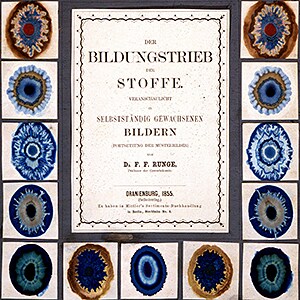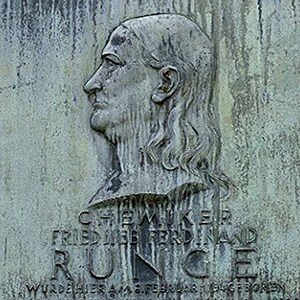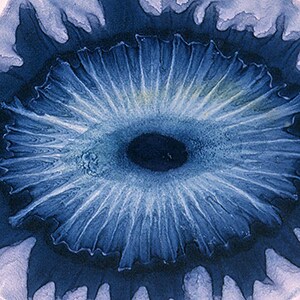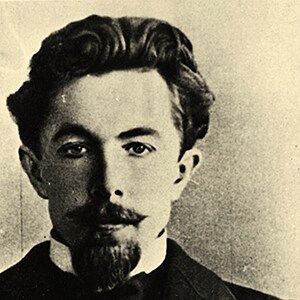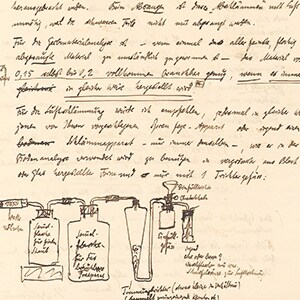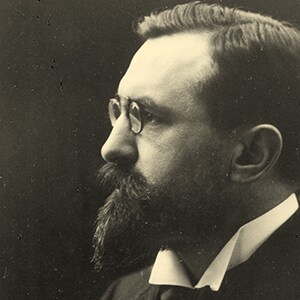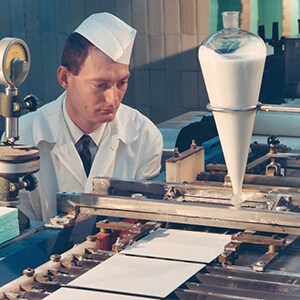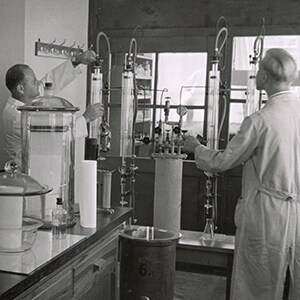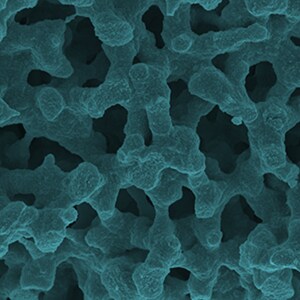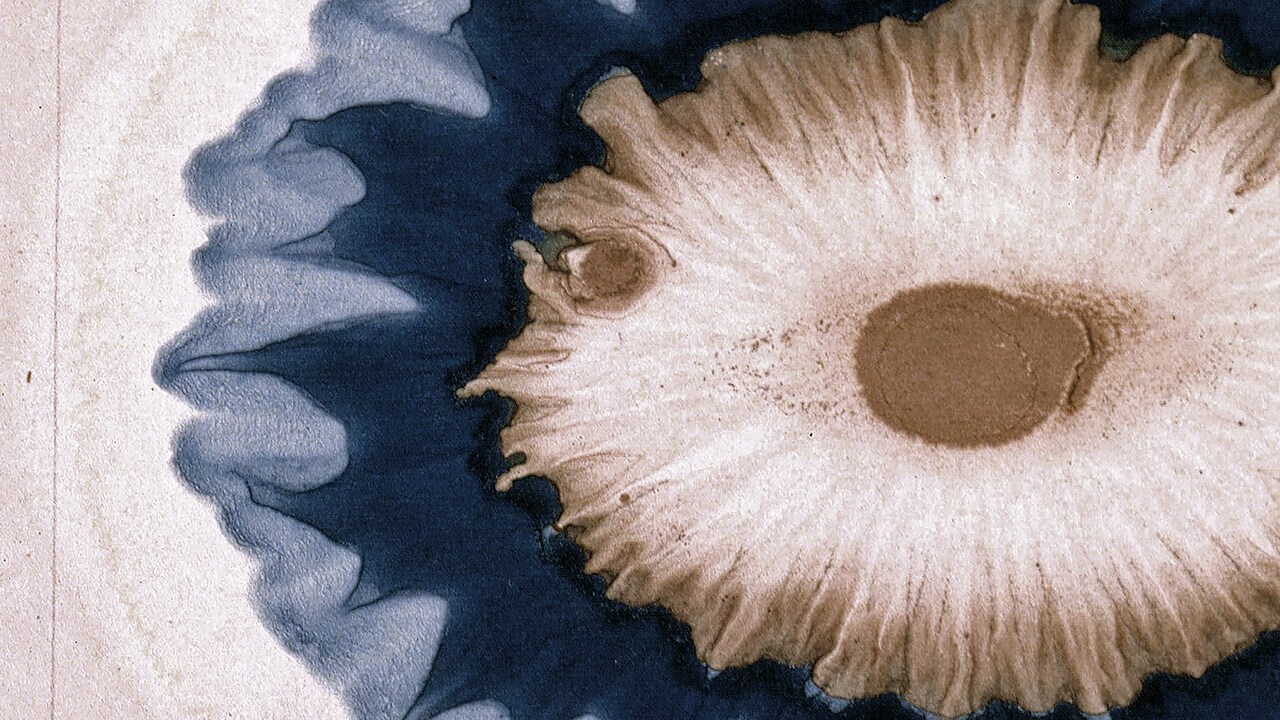
»I name this the driving force for the formation of substances«
Friedlieb Ferdinand Runge, 1855
A traditional method of chemical analysis makes use of the driving force for the formation of substances, i.e. »Bildungstrieb der Stoffe« and the name of a book written and published by Friedlieb Ferdinand Runge in 1855. This book features the originals of »independently generated pictures« in a great variety of form and color, which draw their appeal from a special phenomenon: the interaction of capillary transport and reactions of the most diverse chemical compounds.
»Chromatography«, the term is derived from the Greek words »chroma« for »color« and »graphein« for »to write«, will soon become one of the most widely used analytical tools. From the very beginning, the company contributes to this successstory. Just one year after the Russian botanist Michail S. Tswett first describes the newly discovered separation principle, the company starts with the production of sorbents for chromatography.
From 1904, at the suggestion of Hans Wislicenus, a chemist working in Dresden, the company develops an »aluminum oxide for adsorption analysis purposes«. By 1954 the range of sorbents had already grown to 24 products. A sorbent is the solid stationary phase which absorbs or retains another substance by adsorption and thus enables separation.
Thereafter, the company provides important impetus for all specialty areas. One example is thin-layer chromatography, for which several silica gel varieties are created in the 1950s. In 1966, the company is the first manufacturer to offer ready-to-use TLC layers on a glass plate. In the field of liquid chromatography in columns too, decisive innovations make their way. 1969 heralds the age of high-performance liquid chromatography (HPLC).
In the mid-1980s, biochromatography becomes a focus of research. Its task extends beyond merely sorting by molecular type and leads to the separation of biochemically functional macromolecules. Here, too, the company breaks new ground with the tentacle technology of the Fractogel product range. With this technique, microscopically small, tentacle-like structures literally trap the proteins like the tentacles of an octopus.
Merck KGaA, Darmstadt, Germany, creates a new dimension in HPLC in the year 2000: While separation with ever smaller microparticles had already been very fast, the monolithic separation column Chromolith is the proverbial »turbo« version. This reduces analysis times many times over. The company continues to address current needs for this traditional method in the future – and in ever faster succession.
Friedlieb Ferdinand Runge explores a »the driving force for the formation of substances« and describes it as »not excited or fueled by any external factor«. It is revealed »when the substance sequalize in their chemical opposition. It is a sign of the vitality working in plants and animals.«
Michail S. Tswett manages to separate a pure form of chlorophyll, a pigment found in plants. On a column packed with finely ground calcium carbonate, using petroleum ether as the mobile phase he filters an extract of leaves with a solvent through a column packed with finely ground calcium carbonate powder. At the suggestion of Hans Wislicenus, the company develops »aluminium oxide for adsorption analysis purposes«.
Since 1903, chromatography has been successful thanks to the easy reproducibility of the method and the scientific comparability of the results. This success is predicated on the guaranteed purity of the reagents used. The process is usedon a laboratory scale as well as in large-scale production.

